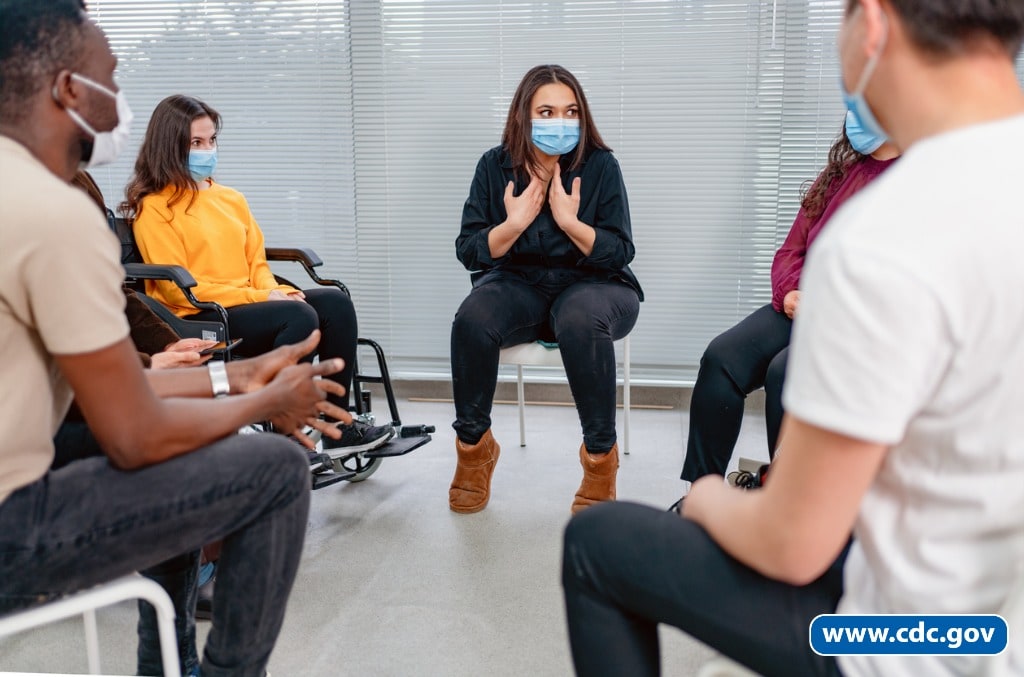A Day to Remember
International Overdose Awareness Day

Remembrance Increasingly Includes Lives Lost to Overdoses Involving Benzodiazepines
August 31 marks International Overdose Awareness Dayexternal icon every year. It’s a day to remember and grieve those we’ve lost, and to strengthen resolve to end overdose injuries and deaths.
In 2020, over 93,000 people lost their lives to drug overdose. The fight against the drug overdose epidemic is continually evolving, and benzodiazepines constitute an emerging and dangerous front.
What are Benzodiazepines?
Benzodiazepines (also known as “benzos” and “downers”) are sedatives commonly prescribed to treat insomnia, anxiety and other conditions.
They work by slowing down the central nervous system and decreasing brain activity. The effects typically last between 6 hours to over 24 hours. Benzodiazepines are also produced and distributed illicitly.
Prescription benzodiazepines include diazepam (Valium), alprazolam (Xanax), and clonazepam (Klonopin), and illicit benzodiazepines include etizolam, flualprazolam, and flubromazolam. It is important to use benzodiazepines only in the amount, frequency, and manner prescribed by a doctor.
Benzodiazepines may cause a variety of adverse reactions:
- Slowed reaction times
- Loss of motor control
- Slurred speech
- Dizziness
- Drowsiness
- Constipation
- Memory problems
- Restlessness
- Delirium
- Aggression
- Depression
- Hallucinations
- Paranoia
Overdoses Involving Benzodiazepines are on the Rise
CDC research on the emerging topic of prescription and illicit benzodiazepine overdose indicates that both fatal and nonfatal benzodiazepine overdoses increased from 2019 to 2020.
- Based on data from 33 jurisdictions:
- Emergency department visits for overdoses involving benzodiazepines increased 24% from 2019-2020.
- Based on data from 23 states:
- Over 90% of all prescription and illicit benzodiazepine-involved overdose deaths also involved either prescription or illicitly manufactured opioids, highlighting the dangers of co-using opioids and benzodiazepines.
- Benzodiazepines were involved in nearly 7,000 overdose deaths in 23 states from January 2019–June2020 – 17% of all drug overdose deaths.
- Illicit benzodiazepine deaths increased 520% (from 51 to 317) from Q2 2019 to Q2 2020.
- Prescription benzodiazepine deaths increased 22% (from 921 to 1,122) from Q2 2019 to Q2 2020.
Benzodiazepine overdose effects include:
- Slurred speech
- Confusion/impaired mental status
- Coma and respiratory depression (in large doses)
- Death (when mixed with other respiratory depressants)
Benzodiazepines and Opioids: Mixing is Dangerous
Taking two or more drugs together, either intentionally or unintentionally, is called polydrug use. Whether intentional or not, mixing drugs can be especially harmful because the effects from combining drugs may be stronger and more unpredictable than one drug alone, and even deadly.
Both benzodiazepines and opioids cause sedation and suppress breathing; combining these drugs increases a person’s risk of overdose and death.
If you know of someone using benzodiazepines or opioids:
- Be aware of the frequency and types of drugs they are using.
- Call 911 immediately if overdose of any substance is suspected, even if naloxone has been administered
- Talk to a physician about the dangers of benzodiazepines and opioids.
- Ask your doctor or pharmacist for a naloxone prescription if you or a loved one are taking high-dose opioids, opioids and benzodiazepines together, or have a substance use disorder.
What Can be Done
- Public health departments and healthcare providers can monitor trends in overdoses involving benzodiazepines and the simultaneous use of opioids to inform response efforts.
- Training public health professionals how to track and respond to incidences of polydrug overdose will help decrease the number of overdose deaths.
- Governments should consider expansion of naloxone availability, and its rapid administration should be encouraged because of the frequent co-involvement of opioids in benzodiazepine overdoses.
Naloxone is a lifesaving medicine that can reverse an overdose from opioids, even when benzodiazepines are also present. Often given as a nasal spray, naloxone is safe and easy to use–and is safe to administer when bystanders are uncertain if opioids are involved because adverse side effects are very rare.
Be sure to contact emergency services for overdoses involving both benzodiazepines and opioids, even after naloxone administration, because benzodiazepine overdose symptoms may need additional medical treatment.
- Understanding the potential harms from prescription benzodiazepine misuse and illicit benzodiazepine use is important to help prevent overdose.
- Learn why benzodiazepines are prescribed and their effects. If you notice yourself or a loved one misusing prescription benzodiazepines–or acquiring illicit benzodiazepines–consult a healthcare professional for suggestions about managing or decreasing drug use.
- Learn how to acquire and use naloxone if you or someone you know is using both benzodiazepines and opioids to reduce the chances of harm.

- Trends in Nonfatal and Fatal Benzodiazepine Overdoses — 38 States and the District of Columbia, 2019–2020 (MMWR)
- Notes From the Field: Illicit benzodiazepines detected in patients with suspected opioid overdose—four states, October 6, 2020-March 9, 2021 (MMWR)
- Benzodiazepines (Street Names: Benzos, Downers, Nerve Pills, Tranks) (usdoj.gov)pdf iconexternal icon
- Benzodiazepines and Opioids | National Institute on Drug Abuse (NIDA)external icon
- Reverse Overdose to Prevent Death | CDC’s Response to the Opioid Overdose Epidemic | CDC
- Considerations for Crisis Centers and Clinicians in Managing the Treatment of Alcohol or Benzodiazepine Withdrawal during the COVID-19 Epidemic: (samhsa.gov)pdf iconexternal icon
- Prescription Opioid and Benzodiazepine Medications and Occupational Safety and Health: Information for Employers and Healthcare Providers (cdc.gov)pdf icon
- Save Lives Now | Drug Overdose | CDC Injury Center
- America’s Drug Overdose Epidemic: Putting Data to Action | CDC
- Recovery Is Possible | Rx Awareness | CDC Injury Center
- Life-Saving Naloxone from Pharmacies | VitalSigns | CDC
- Rx Awareness | CDC Injury Center
- Know the Signs and Get Help for Opioid Addiction | Drug Overdose | CDC Injury Center

